A Guide to Herbal Remedies – Natural Remedies For Everyday Illnesses
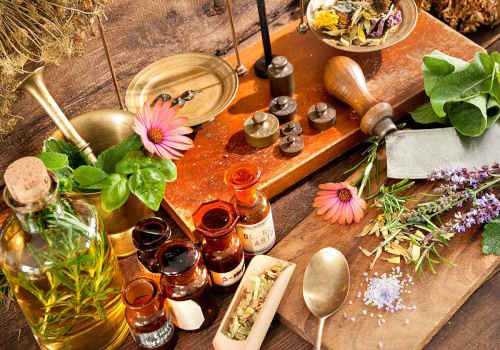
Herbal remedies are plants used like a medicine. People use herbal remedies to help prevent or cure disease. They use them to get relief from symptoms, boost energy, relax, or lose weight.
How can you know what you are getting and if it is useful? This guide can help you choose and use herbals safely.
Many medicinal plants are easy to grow in Colorado and have incredible healing properties. Horticulturist Blake Burger and horticulture intern Kenna Castleberry pick their top 10 to grow at home.
Have u ever found your grandma running after a doctor or medical store for every now & then? We have so many wonderful natural remedies all around for any burns, cut, cold, fever, sneezes and more.
It is very important to have medicinal plants around the house cause you never know when you might need them.
So here is a list of plants that have the highest medicinal value compared to the other million species around the world worth planting around the house.
1. Tulsi
There are four types of tulsi mentioned in ayurvedic texts ie Rama, Krishna, Vana & Kapoor Tulsi.
For over the centuries Tulsi (the queen of herbs) has been known for its remarkable healing properties.
- Tulsi is taken as herbal tea.
- The oil extracted from the Karpoora Tulsi is mostly used in the herbal toiletry. Its oil is also used against insects and bacteria.
- The Rama Tulsi is an effective remedy for Severe acute Respiratory Syndrome. Juice of its leaves gives relief in cold, fever, bronchitis and cough.
- Tulsi oil is also used as an ear drop.
- Tulsi helps in curing malaria.
- It is very effective against indigestion, headache, hysteria, insomnia, and cholera.
- The fresh leaves of Tulsi are taken by millions of people every day.
- Many people wear Tulsi beads, which is said to have certain physical and medicinal properties.
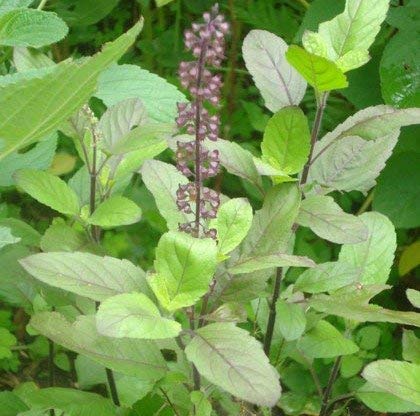
2. Aloe Vera
The aloe vera grows only under the sun with well-drained dry or moist soil. Although the plant tastes like a turd, it’s still edible. The sap from aloe vera is extremely useful to speed up the healing & reducing the risk of infections for :
- wounds
- cuts
- burns
- reducing inflammation
Apart from its external use on the skin, aloe vera is also taken internally in the treatment of :
- ulcerative colitis (drinking aloe vera juice)
- chronic constipation
- poor appetite
- digestive problems

3. Gotu Kola
The gotu kola acts on various phases of connective tissue development and stimulates healing of :

- ulcers
- skin injuries
- decreasing capillary fragility
- stimulation of the lipids and protein necessary for healthy skin
- Leaves are thought to maintain youthfulness.
- Crushed leaves are poulticed to treat open sores.
The gotu kola can also be used to :
- treat leprosy
- revitalize the brain and nervous system
- increase attention span and concentration
- treat venous insufficiency

4. Calendula
It grows in almost any type of soil condition. It has no problem with nutritionally poor, very acidic or very alkaline soils, just as long as it’s moist. Well known as a remedy for skin problems, the deep-orange flowered pot marigold variety is applied externally to :
- bites
- stings
- sprains
- wounds
- sore eyes
- varicose veins
- Internally it is used to treat fevers and chronic infections.
- The tea of the petals tones up circulation and, taken regularly, eases varicose veins.
- Applying the crushed stems of the pot marigold to corns and warts will soon have them easily removable.

5. Basil
You must have used basil lot many times in food but have you ever tried it to heal flatulence? It has the power to treat:
- Cuts
- Lack of appetite
- Stomach gas
- scrapes

6. Thyme
It is mostly known for its strong antiseptic nature. It is wonderful when it comes to the treatment of:
- Congestion
- Stomach gas
- Coughs

7. Rosemary
Rosemary is the great reviver. This perennial woody herb stimulates energy and optimism and sharpens memory and concentration by bringing more oxygen to your brain, according to UMMC. It’s a wonderfully stimulating alternative to caffeine when you need that second wind!
A row of these long-lived and drought-tolerant plants makes a beautiful, bee-friendly, evergreen hedge. You may only need one plant in your garden, as a little bit goes a long way.

8. Lavender
Long recognized for its sweet perfume, lavender also boasts medical benefits as a nervine and mild antidepressant. UMMC suggests adding it to your bath to alleviate stress, tension, and insomnia. It’s also used in creams to treat sunburns and acne.
Woody lavender plants prefer hot, sunny, and dry environments. The fresh flowers are tasty in small doses when added to salads, honey, butter, lemonade, and even shortbread cookies. If you’re crafty, try sewing up an herbal heating pad or eye pillow with the fragrant dried flowers.

9. German Chamomile
Delicate, apple-scented chamomile demonstrates that mildness does not mean ineffectiveness. Primarily grown for its small, yellow-bellied flowers, NCCAM reports that chamomile is one of the best children’s herbs for treating colic, nervous stress, infections, and stomach disorders.

10. Fenugreek, Methi
Fenugreek seeds are nourishing and taken to :

- encourage weight gain (take note, anorexics)
- inhibit cancer of the liver
- lower blood cholesterol levels
- treat inflammation and ulcers of the stomach and intestines
- drain off sweat ducts
- for body building
- for late onset diabetes
- poor digestion
- insufficient lactation
- painful menstruation
- labor pains
- freshen bad breath
- restore a dull sense of taste

11. Sage
Salvia, the Latin name for sage, means ‘to heal’. Internally, the sage is used for :
- indigestion
- flatulence
- liver complaints
- excessive lactation
- excessive perspiration
- excessive salivation
- anxiety
- depression
- female sterility
- menopausal problems
On the other hand, it is used externally for :
- insect bites
- skin infections
- throat infections
- mouth infections
- gum infections
- skin infections
- vaginal discharge
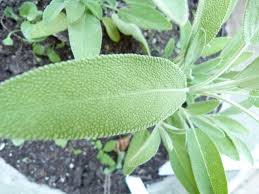
12. Peppermint
Peppermint is sometimes regarded as ‘the world’s oldest medicine’, with archaeological evidence placing its use at least as far back as ten thousand years ago. Pepeprmint are naturally high in manganese, vitamin A and vitamin C. Crushed leaves rubbed on the skin help soothe and relax the muscles. Infused peppermint leaves are used to :
- reduce irritable bower syndrome
- against upset stomachs
- inhibit bacterial growth
- treat fevers
- flatulence
- spastic colon

13. Lemon Balm
The reason the plant is called lemon balm is because of the lemon minty scent of the leaves. The flowers, which appear during the summer, are full of nectar. The crushed leaves, when rubbed on the skin, are used as :
- mosquito repellent
- herpes
- sores
- gout
- insect bites
Infusion of the leaves with water are known to treat :
- colds
- fevers
- indigestion due to nervous tension
- digestive upsets in children
- hyperthyroidism
- depression
- mild insomnia
- headaches

- Medicinal Garden
- With your seeds kit, you’ll also receive a FREE Medicinal Guide that shows you how to turn these 10 plants into tinctures, ointments, salves, poultices, decoctions, infusions, essential oils —all in minute detail so you can follow our guide even if you’ve never made an herbal medicine in your life.
14. Globe Artichoke
A bitter tasting plant that requires a lot of sun, the cardoon has become important as a medicinal herb in recent years following the discovery of cynarin. The cardoon leaves, best harvested before flowering, helps to :
- improve liver and gall bladder function
- stimulate the secretion of digestive juices
- lower blood cholesterol levels
- treat chronic liver and gall bladder diseases
- jaundice
- hepatitis
- asteriosclerosis
- early stages of late-onset diabetes

15. Ashwangandha
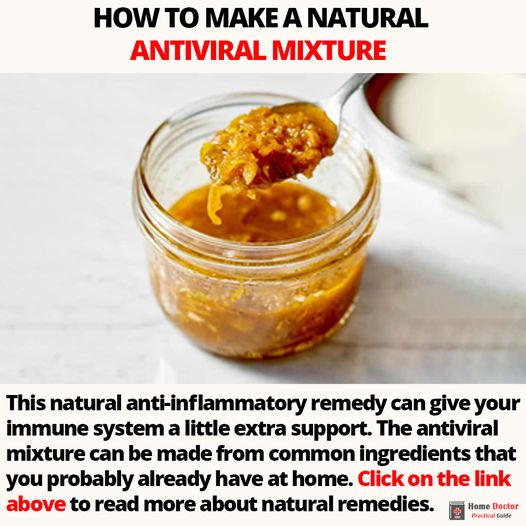
Ashwagandha is best known for stress Reduction, Neural Protection, and a Lot More from an Ancient Herb
The benefits of ashwagandha are many; in addition to promoting fertility, aiding in wound care, and boosting the immune system, some other benefits are:
- Diuretic, Sleep aid
- Galactogogue
- Anti-epileptic
- Anti-tumor, Pain relief
- Eye health
- Heart tonic
- Lowers cholesterol & Regulates blood sugar
- Reduces depression and anxiety, Combats stress
- Fights cognitive decline due to brain cell degeneration

16. Lemon Grass
Lemongrass has been reported to have innumerable therapeutic and other health benefits.
- alleviate certain respiratory conditions including laryngitis and sore throats
- anti-pyretic property which reduces high fevers.
- useful for all types of pain including abdominal pain, headaches, joint pains, muscle pains, digestive tract spasms, muscle cramps, stomachache and others
- lemongrass inhibits bacteria and yeast growth.
- beneficial for nervous and stress-related conditions.

17. Bryophyllum, Panfuti
Bryophyllum calycinum, Bryophyllum pinnatum, also known as the Air Plant, Life Plant, Miracle Leaf, Goethe Plant and the Katakataka (Filipino)) is a succulent plant native to Madagascar.
- The leaf or its juice is taken for diabetes.
- Leaf paste application stops bleeding and heals wounds.
- The burnt leaf (mashi) made in to paste with coconut oil cures burn.
- To prevent septic to cuts from sharp instruments, 15 leaves with four pepper corns roasted, powdered and mixed in cow ghee is applied.
- Leaf paste boiled in oil cures sciatica and rhematic pains.
- One leaf eaten raw with one pepper corn first thing every morning for 3 to 7 days cures urinary stones.
- The leaves can be used raw for making chutneys or tamblis.

18. Rui
RUVA, Purple ( Ekke, Rui,arka ) Calotropis gigantea
- The leaves and flowers of both the varieties are used for pooja of Shiva, Hanuman and Devi.
- Leaves of both varieties are used for fomentation to paining joints.
- Fomentation of leaves after application of castor oil relieves stomach pain of infants.

19. Costus
Costus igneus, commonly known as insulin plant in India, belongs to the family Costaceae. Consumption of the leaves are believed to lower blood glucose levels, and diabetics who consumed the leaves of this plant did report a fall in their blood glucose levels.
The fresh leaves of this plant is chewed two times daily for 1 week after 1 week, 1 leaf should be chewed twice a day this dosage should be continued for 1 month. It is said that this treatment is effective in bringing blood sugar levels under control in diabetes patients.

20. Khus
It has anti-inflammatory and antiseptic effects that provide relief from inflammations in circulatory system and nervous system. Khus khus is used to create a tonic bath, which is the reason why it is often included in high quality soaps.
It is a boon for individuals suffering from rheumatism, arthritis, gout, muscular aches, dryness and cracking of skin etc.
The oil obtained from khus khus has sedative effect and aids in the treatment of emotional outbursts, such as anger, anxiety, epileptic and hysteric attacks, restlessness, nervousness, etc.

21. Vitex Negundo
Commonly known as the five-leaved chaste tree, is a large aromatic shrub with quadrangular, densely whitish, tomentose branchlets.
Key therapeutic benefits:
- Because of its anti-inflammatory, antibacterial and antifungal properties, the plant is useful in treating sores and skin infections.
- Five-Leaved Chaste Tree relieves muscle aches and joint pains.
- The herb is effective in treating vaginal discharge.

22. Sagargota, Bonduc nut
Sagargota, Bonduc nut, Fever nut, physic nut is used as anti diabetic & anti-malarial drug
Medicinal Uses :
- Root : In dysentery and diabetes
- Leaves : Emmenagogue
- Seed : Abortifacient used as anti-malarial drug and also tonic

23. Stevia
With its steviol glycoside extracts having up to 300 times the sweetness of sugar,stevia has garnered attention with the rise in demand for low-carbohydrate, low-sugar food alternatives.
Because stevia has a negligible effect on blood glucose, it is attractive as a natural sweetener to people on carbohydrate-controlled diets.

24. Marsh Mallow
The plant of which marshmallows were once made of. The root is taken internally to treat :

- inflammations and irritations of the urinary and respiratory mucus membranes
- counter excess stomach acid
- peptic ulceration
- gastritis
Externally, the root is applied to :
- bruises, sprains
- aching muscles
- insect bites
- skin inflammations, splinters
- The leaves are very edible, unlike the aloe vera. They can be added to salads, boiled, or fried. It is known to help out in the area of cystitis and frequent urination.

25. Great Burdock
It requires moist soil and can grow shadeless. The great burdock is the pretty famous in the area of detoxification in both Chinese and Western herbal medicine. The root is is used to treat ‘toxic overload’ that result in throat infections and skin diseases like :
- boils, rashes, burns, bruises
- herpes, eczema, acne
- impetigo, ringworm, bites
- The leaves and seeds can be crushed to poultice it to bruises, burns, ulcers and sores
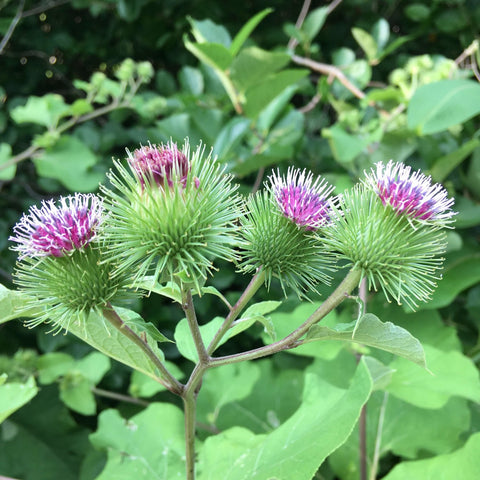
26. Camomile
With a sweet, crisp, fruity and herbaceous fragrance, has long been used medicinally as a remedy for problems regarding the digestive system.
It has a soothing and calming effect in the area of aromatherapy, used to end stress and aid in sleep.
The entire herb is used to treat common aches like toothache, earache, shoulder pain and neuralgia.

27. Chinese Yum
A type of yam that can be eaten raw, the chinese yam can be easily grown, succeeding in fertile, well drained soil in a sunny position. It is sweet and soothing to the stomach, spleen and has a tonic effect on the lungs and kidneys. It is used internally to treat :
- tiredness, weight loss, loss of appetite, poor digestion, chronic diarrhea
- asthma, dry coughs, uncontrollable urination, diabetes, emotional instability
Externally, it is applied to ulcers, boils, abscesses
- The leaf, on the other hand, is used to treat snakebites and scorpion stings.

28. Echinacea
One of the world’s most important medicinal herbs, the echinacea has the capacity to raise the body’s resistance to bacterial and viral infections by stimulating the immune system. It also has antibiotic properties that helps relieve allergies. Basically, the roots are beneficial in the treatment of sores, wounds and burns.
It was once used by the Native Americans as an application for insect bites, stings and snakebites. The echinacea grows on any well drained soil, as long as it gets sunlight.

29. Siberian Ginseng
The siberian ginseng has a wide range of health benefits, mostly as a powerful tonic herb that maintains good health. Its medicinal properties are used for :
- menopausal problems, geriatric debility, physical and mental stress
- treat bone marrow suppression caused by chemotherapy or radiation
- hypercholesterolemia and neurasthenia with headache
- insomnia, poor appetite, increasing endurance, memory improvement
- anti-inflammatory purposes
- immunogenic purposes
- chemoprotective purposes
- radiological protection

30. The Great Yellow Gentian
The great yellow gentian root is a bitter herb used to treat digestive disorders and states of exhaustion from chronic diseases. It stimulates the liver, gal bladder, and digestive system, strengthening the overall human body. Internally, it is taken to treat :
- liver complaints
- indigestion
- gastric infections
- anorexia

31. Sea Buckthorn
The sea-buckthorn has been used throughout the centuries in China to relieve cough, aid digestion, invigorate blood circulation and alleviate pain. The branches and leaves are used in Mongolia to treat gastrointestinal distress in humans and animals.
The bark and leaves are used for treating diarrhea, gastrointestinal, dermatological disorders and topical compressions for rheumatoid arthritis. Even the flowers are used as skin softeners.
The berries, on the other hand, are used together with other medications for pulmonary, gastrointestinal, cardiac, blood and metabolic disorders. Fresh sea buckthorn berry juice is known to be taken in the event of colds, fever, exhaustion, stomach ulcers, cancer, metabolic disorders, liver diseases, inflammation, peptic ulcer, gastritis, eczema, canker sores, general ulcerative disorders, keratitis, trachoma

32. Tea Tree
Even the aborigines have been using the tea tree leaves for medicinal purposes, like chewing on young leaves to relieve headaches. The paperbark itself is extremely useful to them as it serves to line coolamons when used as cradles, as a bandage, like a sleeping mat, as material for building humpies, as an aluminum foil, as a disposable raincoat and for tamping holes in canoes.
The leaves and twigs, eventually made into tea tree oil, is anti-fungal, antibacterial, antiseptic and deserves a place in every household medicine box. Tea tree oil can be used to treat: cystitis, glandular fever, chronic fatigue syndrome, thrush, vaginal infections, acne, athlete’s foot, verrucae, warts, insect bites, cold sores, nits, minor burns

These easy-to-grow herbs bring health benefits to your garden as well as your family. Many attract beneficial insects, including bees, and help repel harmful pests from more sensitive plants nearby.
Be sure to locate plants with their preferred conditions for light, water, and temperature in mind.
Do you know about the gift of nature to save the life of people from various health problems and make them feel secure by curing significant issues? How to live healthy in this world without having chronic diseases or illness or any other health issues which may hurt you physically and mentally? Due to dense population, people are trying to demolish the forest, garden areas to create shelter, so they forced to destroy the nature’s gift such as natural ingredients, secret medicinal herbs and more which are grown in wild forest, mountains and other places. When you read this review entirely, sure you will get chance to know about secrets medicinal ingredients, herbs and more used by our ancestor to get back the lost health without losing your life. Claude Davis was highlighted all the stuff in the form of the e-book The Home Doctor filled with a list of natural ingredients and remedies that you can quickly grow in the backyard or at free space to include it in your routine diet or external usage to get well soon.

Books can be your best pre-collapse investment.
Carnivore’s Bible (is a wellknown meat processor providing custom meat processing services locally andacross the state of Montana and more. Whether your needs are for domestic meator wild game meat processing)
The Lost Book of Remedies PDF ( contains a series of medicinal andherbal recipes to make home made remedies from medicinal plants and herbs.Chromic diseases and maladies can be overcome by taking the remediesoutlined in this book. The writer claims that his grandfather was taughtherbalism and healing whilst in active service during world war twoand that he has treated many soldiers with his home made cures. )
Easy Cellar(Info about building and managing your root cellar, plus printable plans. The book on building and using root cellars – The Complete Root Cellar Book.)
The Lost Ways (Learn the long forgotten secrets that helped our forefathers survive famines,wars,economic crisis and anything else life threw at them)
LOST WAYS 2 ( Wordof the day: Prepare! And do it the old fashion way, like our fore-fathers did it and succeed longbefore us,because what lies ahead of us will require all the help we can get. Watch this video and learn the 3 skills that ensured our ancestors survival in hard times offamine and war.)
SOURCE : https://www.prepperfortress.com/a-guide-to-herbal-remedies-natural-remedies-for-everyday-illnesses/
Anyone can join.
Anyone can contribute.
Anyone can become informed about their world.
"United We Stand" Click Here To Create Your Personal Citizen Journalist Account Today, Be Sure To Invite Your Friends.
Before It’s News® is a community of individuals who report on what’s going on around them, from all around the world. Anyone can join. Anyone can contribute. Anyone can become informed about their world. "United We Stand" Click Here To Create Your Personal Citizen Journalist Account Today, Be Sure To Invite Your Friends.
LION'S MANE PRODUCT
Try Our Lion’s Mane WHOLE MIND Nootropic Blend 60 Capsules
Mushrooms are having a moment. One fabulous fungus in particular, lion’s mane, may help improve memory, depression and anxiety symptoms. They are also an excellent source of nutrients that show promise as a therapy for dementia, and other neurodegenerative diseases. If you’re living with anxiety or depression, you may be curious about all the therapy options out there — including the natural ones.Our Lion’s Mane WHOLE MIND Nootropic Blend has been formulated to utilize the potency of Lion’s mane but also include the benefits of four other Highly Beneficial Mushrooms. Synergistically, they work together to Build your health through improving cognitive function and immunity regardless of your age. Our Nootropic not only improves your Cognitive Function and Activates your Immune System, but it benefits growth of Essential Gut Flora, further enhancing your Vitality.
Our Formula includes: Lion’s Mane Mushrooms which Increase Brain Power through nerve growth, lessen anxiety, reduce depression, and improve concentration. Its an excellent adaptogen, promotes sleep and improves immunity. Shiitake Mushrooms which Fight cancer cells and infectious disease, boost the immune system, promotes brain function, and serves as a source of B vitamins. Maitake Mushrooms which regulate blood sugar levels of diabetics, reduce hypertension and boosts the immune system. Reishi Mushrooms which Fight inflammation, liver disease, fatigue, tumor growth and cancer. They Improve skin disorders and soothes digestive problems, stomach ulcers and leaky gut syndrome. Chaga Mushrooms which have anti-aging effects, boost immune function, improve stamina and athletic performance, even act as a natural aphrodisiac, fighting diabetes and improving liver function. Try Our Lion’s Mane WHOLE MIND Nootropic Blend 60 Capsules Today. Be 100% Satisfied or Receive a Full Money Back Guarantee. Order Yours Today by Following This Link.






